Codepen example: https://codepen.io/bofemptiness/pen/PxGePa?page=1&
The problem is more about why same lines are different, not a scale.
css:
.hr{
width: 100%;
margin:10px;
background: linear-gradient(to right, rgba(0, 0, 0, 0), rgba(0, 0, 0, 65%), rgba(0, 0, 0, 0));
border: 0;
height: 1px;
padding: 0;
font-size: 16px;
display: inline-block;
}
If I make height: 0.8px; with normal PC scale 100% some lines will just disappear..

